
I can not help but tell about the unique expedition to Antarctica on the pages of the site.
In the winter of 2018, the Russian TV presenter and producer Valdis Pelsh, with the crew, went to Antarctica. The expedition route passes through 3 poles: the Pole of Inaccessibility, the geographic South Pole of the Earth and the Pole of Cold. The uniqueness of the expedition is that the expedition made its way through the whole of Antarctica, in an autonomous mode, without refueling and replenishment of provisions. Nobody has ever done such expeditions.
The video materials of the expedition formed the basis of the film, the documentary trilogy “Antarctica. Walking beyond the three poles.” This article describes the first part of the expedition.
For any traveler, the live experience of a real expedition is invaluable. The film describes the technical difficulties, the difficulties of survival in harsh conditions, as well as the psychological problems of a small team in an extreme situation.
The first part of the film is at the end of this article.
Other parts:
Antarctica. Walking beyond the three poles. Part 2
Antarctica. Walking beyond the three poles. Part 3
Antarctica. Walking beyond the three poles
The expedition included 7 people:
- creator of the unique all-terrain vehicles “Emelya”, designer Vasily Elagin,
- two driver-mechanics Alexey Makarov and Vladimir Obikhod.
Camera crew: - Director Kristina Kozlova,
- operators Denis Negrivetsky and Alexander Kubasov,
- as well as author and presenter Valdis Pelsh.
Traveling more than five and a half thousand kilometers long, begins in the north of Antarctica, from the Novolazarevskaya station. Then travelers will go south to the Pole of Inaccessibility – the point farthest from all the coasts of Antarctica. Then comes the South Pole, followed by the Vostok station, the Cold Pole of the planet, and finally the Progress station on the east coast of the mainland.
All-terrain vehicles Emelya are used as expedition vehicles. These are the only vehicles that crossed the Arctic Ocean from coast to coast through the North Pole.
Arrival in Antarctica
The expedition started from the capital of the Republic of South Africa, Cape Town. After six and a half hours of flight, the expedition members landed on the ice landing strip of the Novolazarevskaya polar station. At regular airports, icing is a serious problem, and landing in such conditions for most aircraft is guaranteed to end in disaster. But not for the IL-76 aircraft, specially designed to work in difficult conditions. And in Antarctica there are no others.
One of the main symbols of winged Antarctica today is the Russian IL-76. Due to its unique characteristics, it is in great demand here. It is rented and used by foreign companies, including American ones. Our expedition, our cars, all your cargo arrived in the Antarctic on it.
Cars were unloaded from a plane directly onto the Antarctic ice, covering 98% of this continent. The thickness of the ice shell in this place is more than 400 meters.
Antarctica Features
The summer season in the Southern Hemisphere lasts from November to February. During this period, the workhorse of transport aircraft Il-76 manages to make 10-11 flights to the southern continent. Every time take-off and landing is a serious test, even for experienced pilots. The first Soviet aircraft appeared in Antarctica in 1956, along with the first Antarctic expedition. They were prepared, given the rich experience of flying in the northern latitudes. But it turned out that the Arctic and Antarctic are two different things.
Firstly, the structure and property of snow. He is here so that he erases the skis on which the chassis is mounted, as if emery.
Secondly, the thickness of the ice shell adds 3-4 thousand meters to the flight altitude, which means that more powerful engines are needed. The wind strength here can be such that the pilots sometimes spent hours in the cockpit of a plane fixed by cables and worked as a helm, preventing it from flying up. The An-2 aircraft, left for the first wintering, was not found on the spot. Where he stood, there were only snatches of cables and skis that tightly froze into the ice. The plane itself, crashed, was lying a few kilometers from this place.
Expedition fees
Charges took only three days. During this time, satellite communication antennas were installed, residential space was arranged inside the cars, filming equipment was placed, the provisions and fuel necessary for survival were calculated and prepared. They are loaded in special trailers of all-terrain vehicles.
Vasily Elagin, to the end did not leave doubts: will the equipment withstand? The fact is that each all-terrain vehicle is designed to carry up to 2 tons of cargo. And the total total weight of luggage in trailers is more than 11 and a half tons. Vasily Elagin understood that he was risking, and he was risking everything. But deep down in every designer, tester, traveler adventurism lives on. And this is normal. Otherwise, how to pass a test that no one has passed before you?
Antarctica, oddly enough, is the highest continent on the planet. The fact is that its average height is 2,000 meters above sea level. By and large, the expedition route took place in conditions close to the highlands. The load on the engines, in rarefied air conditions, could be excessive.
Expedition start
Height: 119 meters above sea level.
Polar station “Novolazarevskaya” went to see off the expedition. There were solemn words and cries of Ur! and champagne, which sprinkled both cross-country vehicles. But, it’s time to hit the road.
The first kilometer of the expedition was given with great difficulty. Temperature overboard minus 30 degrees. For the southern continent, this is normal summer weather.
Almost the entire surface of the mainland of Antarctica is covered with a layer of ice up to 4 kilometers thick. This is the so-called dome of Antarctica. It is constantly moving, literally sliding from the center of the continent into the ocean. So icebergs are formed. One of the largest ice islands in history broke away from Antarctica in 2000. Its area was 11,000 square kilometers.
But for the expedition, not icebergs, but cracks were of particular danger. The depth of the cracks can reach several hundred meters. With increasing planetary temperature, the number of cracks is constantly increasing.
The first serious task of the expedition is to climb onto the dome. Cars worked to the limit because of the steepness of the rise and the unevenness of the terrain. Go above the second gear did not work. The snowy terrain under the wheels does not have fast driving. Every now and again, all-terrain vehicles had to overcome zastrugi, elongated snow ridges, the height of which can reach one and a half meters. The cargo was especially hard. Trailer suspensions still coped with irregularities, but the load on the sled drag was much more than calculated.
The first failure – the weak link was the rear axle drive circuit. From exorbitant loads, it stretched to the whole link.
Expedition Food
The basis of the ration of the expedition is sublimated, that is, completely devoid of water, products. To survive in Antarctica you need to eat very well. Scientists have calculated that for normal functioning of the body in polar conditions, 4,500 to 5,000 kilocalories per day are needed. That is, about 3 times more than in the middle latitudes. And if the polar explorer is regularly engaged in physical labor, then this rate increases to 8,000 kilocalories. If there is less, then exhaustion will come very quickly.
The times when pioneers and explorers of Antarctica ate dogs and could kill, for example, 500 emperor penguins before wintering, have long passed. Do not try to find delicacies such as grilled cormorants, seal brains or scrambled eggs from penguin eggs at polar stations. Food obtained from wildlife in Antarctica is prohibited, with one pleasant exception: you can fish.
Sublimates are an achievement of modern science. They retain all the nutrients and vitamins, you just need to add water. But not only sublimates, the traveler will live. Few people know that the most energy-intensive foods in the diet of Antarctic conquerors are lard and chocolate. The expedition cannot do without them. As without roach, a source of salt. Onions, garlic, crackers, experienced polar explorers advised to take all this.
Another Antarctic treat is chicken eggs. Not only the total weight of your cargo, but also its volume is very important. Such a simple object as a chicken egg also has its own volume and can be optimized. Take the eggs, break them into a bag, and then leave the bag in the cold. All! At the right time, just chop off the necessary volume for your omelet and throw it in the pan.
Plans and daily routine
It was planned to go through Antarctica, keeping within 50 days. It is for 50 days that the stock of products is calculated. To do this, every day you need to overcome a distance of at least 100 kilometers. A small, in general, distance in Antarctica turns into a grueling transition, during which both people and technology have a hard time. The snow is heavy, it quickly clogs the drive mechanisms. You have to clean them manually during short stops. If this is not done, it will destroy the rubber parts – anthers. And their replacement requires completely different efforts and time.
Summer in Antarctica is a polar day. The sun hangs over the horizon around the clock. Therefore, to determine when you need to go to bed, you can only look at the clock. Rest is necessary. And first of all it concerns drivers. There are three of them in two cars. Antarctic terrain prevents the driver from relaxing. To maintain attention and concentration, they have to live and work according to a special schedule. In the afternoon, the drivers slept for 2 hours, and drove for 4 hours. It turned out that each of the 3 drivers drove 8 hours a day. Even sometimes more.
The expedition made full use of the energy of the sun. Cars were set up for the night so that at 5-6 o’clock in the morning, the sun would shine directly into the windows of the cabs and thus warm the interior.
In the cabin of the all-terrain vehicle for living there are voluminous shelves, a table, a computer, hangers for everything you need and comfortable sleeping places. By morning, the temperature here is a maximum of minus 10 degrees, despite the fact that it can be up to minus 40 overboard. But the crews did not suffer at all, because they had very warm sleeping bags on the padding pad, which were designed for minus 40 degrees. So the travelers woke up completely unfrozen. There were 3 berths in one all-terrain vehicle, and 4 in the second.
Nevertheless, the expedition members in the early days of the journey began to realize that despite the vast expanses surrounding them, everyone experienced an acute shortage of personal space. It was hoped that this would not lead to conflicts.
Second day
Height: 1,800 meters above sea level.
Cyclone still caught up with the expedition during the night. I even had to dig out a little. Then we went blindly through the instruments. Nobody was going to cancel the norm of 100 – 120 kilometers per day.
The expedition continued its movement to the point farthest from the coast of Antarctica – the Pole of Inaccessibility. Already familiar difficulties, such as uneven terrain, rarefied air and snow clogging the drive units, added a blizzard. Visibility tended to zero. Nerves to the limit.
First difficulties
On the second day, what mechanics were so afraid of happened: steep climbs began.
The length of the slope, on which the cars were to climb 400 meters. The steepness is more than 10 degrees. This is a lot, especially when you consider that under the wheels of all-terrain vehicles there is not a solid surface, but loose snow. A machine without cargo can still overcome it, but with five tons on the tail it is impossible.
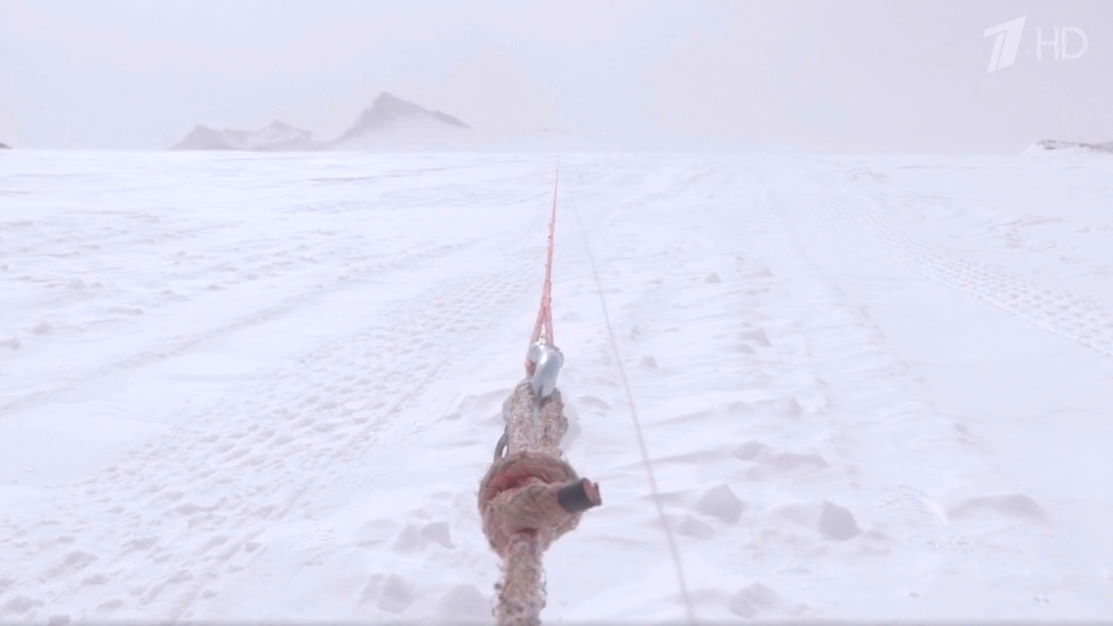
The team decides to free one all-terrain vehicle, in a double hitch, pull one caravan to the top, and then another.
The engine power of each all-terrain vehicle is 75 horsepower. Together – 150. At the time of the assault, all-terrain vehicles rushed with such force that the coupling device burst. Well, that was a spare. The metal could not stand it, but the slope did not submit.
If the power of two all-terrain vehicles when moving up the slope is not enough, then it is necessary that at least one of them moves on a flat surface. The hitch length has increased to 400 meters. Being at the top, the head all-terrain vehicle pulled the whole caravan with a long cable. Finally, the job is done. The assault on the slope, including the repair of the drag, took as long as 3 hours. Now it was necessary to make up for lost time.
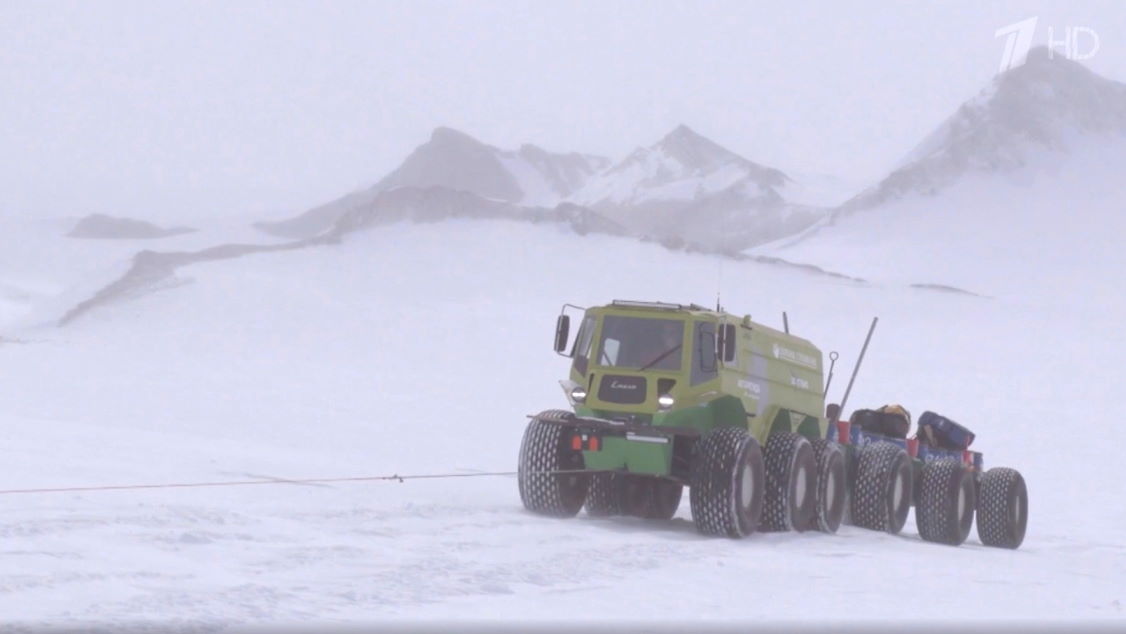
The expedition passed more than 300 kilometers, but when you see all this vastness that surrounds us, you understand that this is just one step towards the goal. The team was able to climb the Antarctic dome, and now under them about 3,000 meters of pure ice.
Highland difficulties
At an altitude of 3,000 meters, the human body experiences an acute shortage of oxygen. Here it is almost 30% less than at sea level. Lack of appetite, headache, fatigue – these are the first signs of mountain sickness. And this is just the beginning. The first goal of the expedition, the Pole of Inaccessibility, is located at an altitude of 3700 meters. And with each meter dialed, hypoxia will intensify. Oxygen is not only enough for people, but also for engines.
Due to the fact that the air is thin, the engine power drops sharply. So that he does not stall, the driver is forced to switch to a lower gear. From this fuel consumption increases exponentially. If the fuel reserves run out earlier, the caravan will be stuck in the middle of the icy desert.
Despite all the difficulties, the crews of all-terrain vehicles continued to move deep into the mainland towards their goal. Climbing to the dome means that the area of cracks that have been carefully avoided is already behind, which means you can relax for a while.
To the first pole more than 1,000 kilometers, it is approximately 8-9 days of a monotonous journey, from which you are very tired morally. The only trace of human presence in this part of Antarctica is the abandoned American Plateau station, located a little away from the route laid. To get to the station, long abandoned by people, you have to make a detour of more than 200 kilometers.
On the one hand, the extra 200 kilometers is almost 180 liters of precious fuel. On the other hand, such a unique chance does not occur often. The expedition members decided to deviate from the route and walk past the Plateau station. This is an American station abandoned by people in 1969. Over the past 50 years, probably 10 people have been there.
Polar stations in Antarctica
To date, from 80 to 90 polar stations and settlements from 30 states operate in Antarctica. Most of them are on the coast and islands. And only four stations operate inside the continent. Russian “Vostok”, American “Amundsen-Scott”, French-Italian “Concordia” and Chinese “Kunlun”.
Ensuring the vital activity of the station inside the mainland is quite difficult. Most of the cargo for the work of the Russian Antarctic expedition is delivered to the southern continent by sea. The research vessel Akademik Fedorov has been sailing the route St. Petersburg – Antarctica for more than 30 years. This ship replaced the legendary diesel electric ship Mikhail Somov, whose name is associated with one of the most fascinating stories of salvation in the Antarctic.
Day three
Height: 3,200 meters above sea level.
The morning of the 3rd day of the expedition begins with problems. In one of the cars, a battery suddenly sat down. A short circuit may have occurred somewhere. Together with the battery, the interior heating furnace failed.
In the summer, that is, from November to February, the temperature in Antarctica varies widely: from 0 degrees on the coast, to minus 60 in the center of the mainland. In winter, which lasts 8 months, the thermometer can easily drop to minus 80 degrees. And this is not the limit. The lowest temperature on Earth in the entire history of observations was recorded here in Antarctica, minus 89.2 degrees. Such weather was on July 23, 1983, at the Arctic pole of cold, at Vostok station, where the expedition members had yet to get.
Despite all the efforts of the mechanics, it was not possible to bring the stove back to life. The temperature in the living compartment of the all-terrain vehicle will now not rise above 0 degrees. The expedition members prepared for such a turn. They have enough warm things in their arsenal. However, a constant stay at low temperatures causes a condition that doctors call the cold fatigue of the body. In this state, people have reduced performance, insomnia, indifference to any activity and, most dangerous in a confined space, irritability increases.
In addition to the troubles with the battery and the stove, mechanics found that the engine was leaking oil. And most importantly, why you need to monitor in Antarctica is that not a single drop of oil or fuel gets on the ice. Antarctica is very clean. You can’t litter here at all. Visitors are asked to check the soles of shoes for dirt, microorganisms, or plants. You may ask: How then, for example, with the liquid products of human life? Especially on a hike? Very simple: every 100 kilometers you dig a hole and pour everything that has accumulated there. And with the solid products of human life is even easier. And this law is strictly observed. Everything is stored in bags and you carry everything with you.
Repair work took several hours, but the leak was eliminated, and you can safely move on.
Fifth day
Height: 3,500 meters above sea level.
At an altitude of 3,500 thousand meters, the humidity is 0. And this means that each expedition participant must drink at least 3 liters of water per day. 3 liters for 7 people, for 50 days – we get a ton. Why carry it with you? Around the clear snow of Antarctica. But in order to melt a ton of snow, you need to spend a lot of fuel. Therefore, there are special containers for snow. They are loaded into the car, next to the engine. The engine is running, the container is heating up. The man then drinks water and smiles. Just do not forget that the snow does not contain minerals. Therefore, each member of the expedition took pills with trace elements.
To catch a cold on the coldest continent of the planet is easy. Therefore, in addition to the salts necessary for the body, members of the group drank vitamins and drugs for the prevention of colds. Especially good are drugs designed to enhance immunity. Thanks to them, they held on. Despite the 30 degree frost, no one got sick.
But the transition in adverse conditions greatly affected the technique. The loads faced by all-terrain vehicles, even in the middle latitudes, would cause problems. And here, in Antarctica, failure after failure.
Other parts:
Antarctica. Walking beyond the three poles. Part 2
Antarctica. Walking beyond the three poles. Part 3
Film Valdis Pelsch “Antarctica. Walking beyond the three poles.” First movie
All rights to the content content of the article: text, photos and video materials belong to the creators and copyright holders of the film “Antarctica. Walking beyond the three poles .” Link to the original content. If you are the copyright holder of this content, it is not this content and you believe that your rights are violated, please inform the site owner to resolve the differences in a pre-trial manner. This can be done in the comments on the article or on the Contact page.

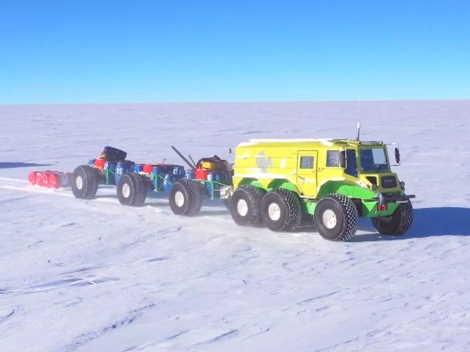
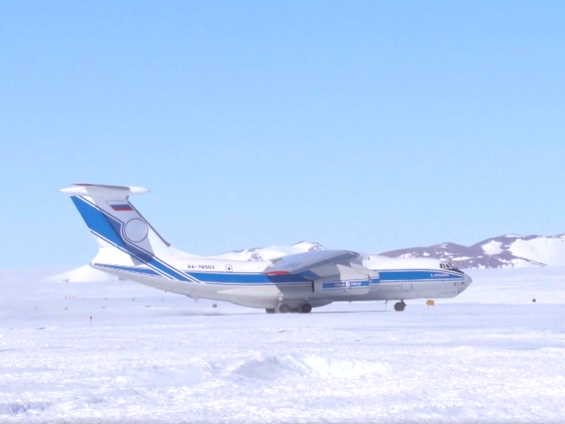







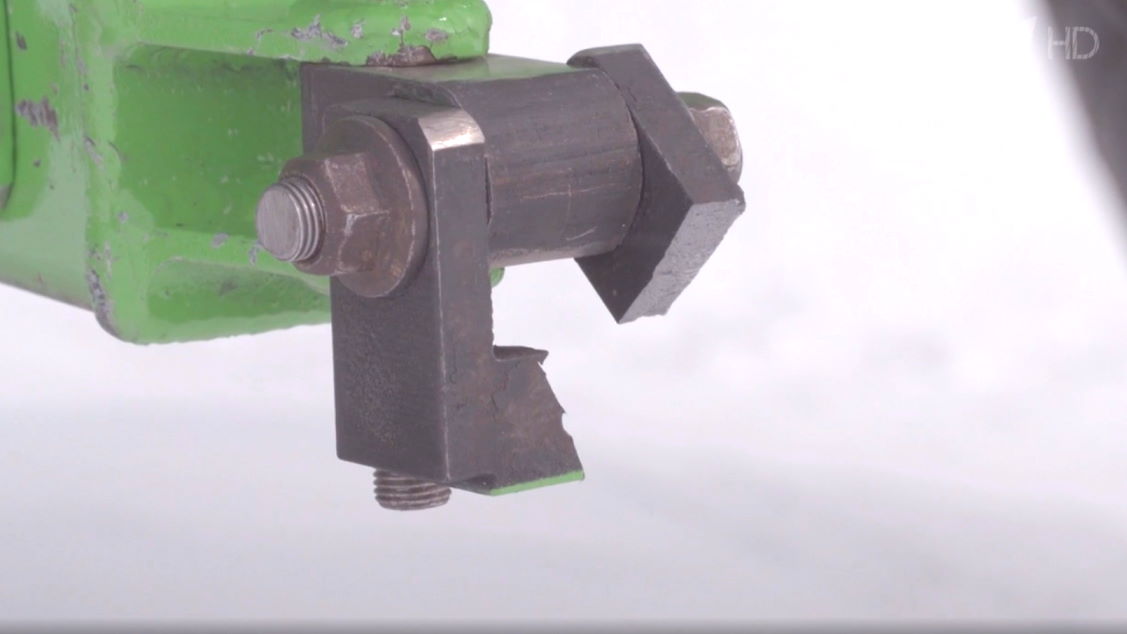
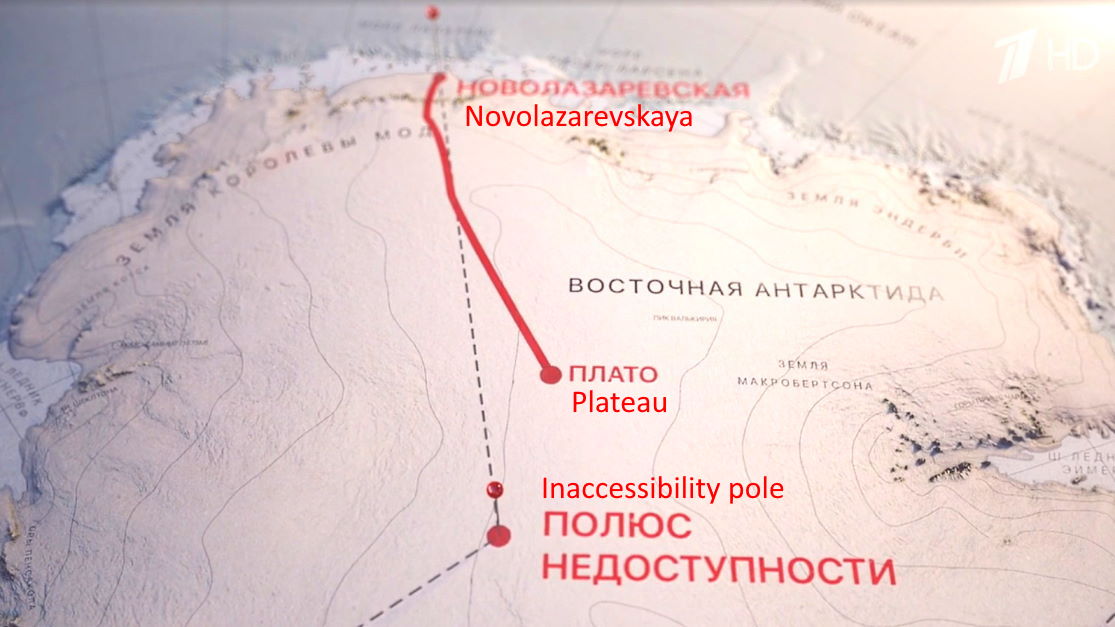
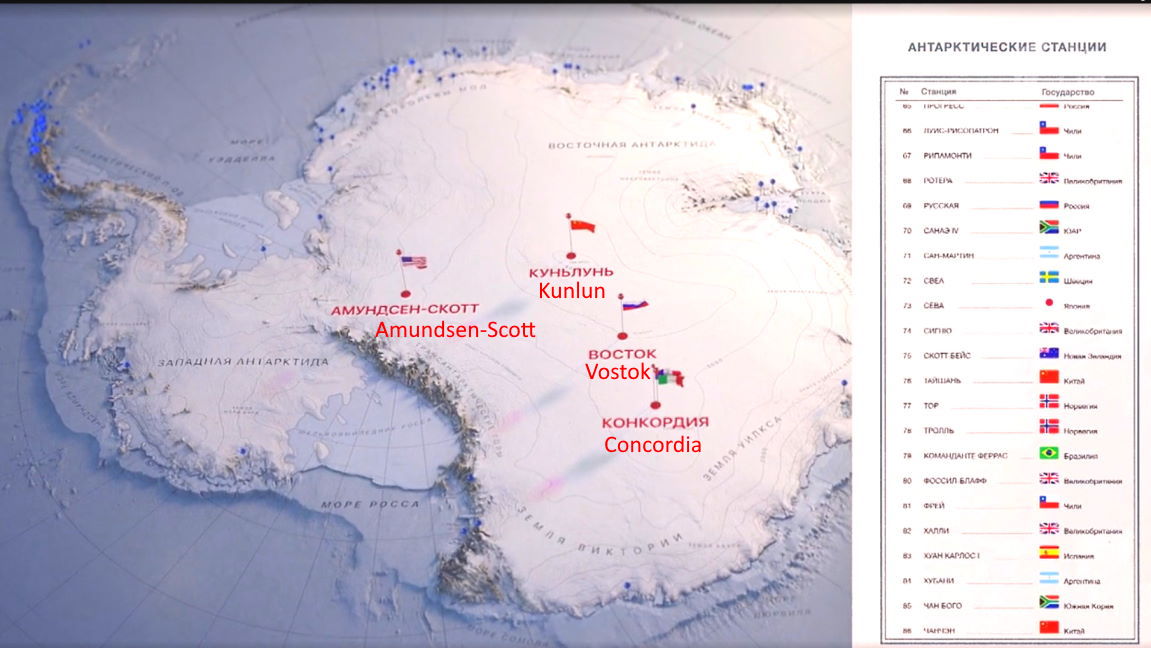


Leave a Reply